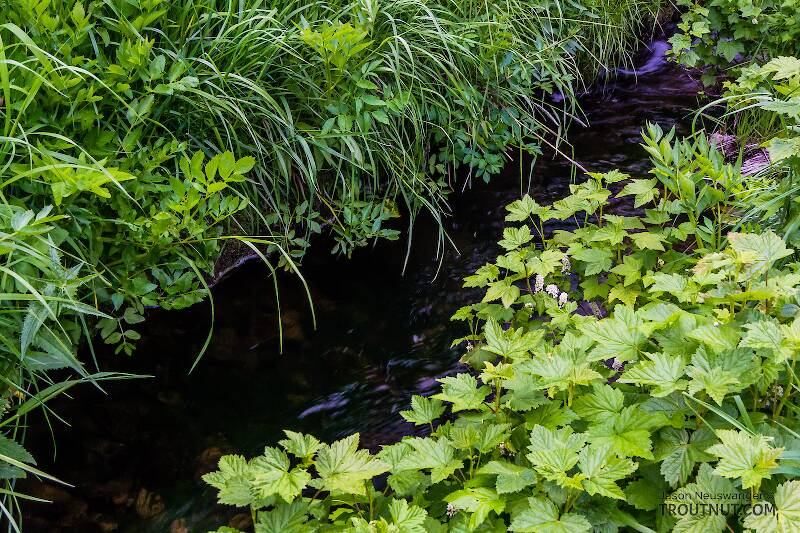
Salmonflies
Pteronarcys californica
The giant Salmonflies of the Western mountains are legendary for their proclivity to elicit consistent dry-fly action and ferocious strikes.


Stonefly Species Leuctra duplicata (Tiny Winter Blacks)
Species Range
Physical description
Most physical descriptions on Troutnut are direct or slightly edited quotes from the original scientific sources describing or updating the species, although there may be errors in copying them to this website. Such descriptions aren't always definitive, because species often turn out to be more variable than the original describers observed. In some cases, only a single specimen was described! However, they are useful starting points.
Description from GBIFthe Global Biodiversity Information Facility
Source: Morphological Systematics Of Leuctra Duplicata Claassen, 1923 Species Group (Plecoptera: Leuctridae)
Atlantic Needlefly http: // lsid. speciesfile. org / urn: lsid: Plecoptera. speciesfile. org: TaxonName: 460988 (Figs. 1 – 26, 33)Source: Morphological Systematics Of Leuctra Duplicata Claassen, 1923 Species Group (Plecoptera: Leuctridae)
Male. The dorsal abdominal process of the 8 th abdominal tergum emanates anteriorly, extending ca. ½ length of the segment and terminates on the posterior margin as a raised, bilobed process with small, distally rounded or subtriangular lobes (Figs. 13 – 15). The dorsal abdominal process of the 7 th abdominal tergum is nearer the anterior margin of the segment and raised as a bar with smaller, distally rounded lobes (Figs. 13 – 15). The paired dorsal processes exhibit variation, namely in the distance between lobes and “ scaly ” nature of the lobes that can be seen only with SEM (Figs. 13 – 15). The specilla are broadest medially in lateral view due to an expanded keel, noticeably thickened in dorsal ½, and taper very little distally (Figs. 1 – 6); the outer margin has low, tooth-like tubercles present along the outer distal 1/3 (Figs. 7 – 12); in caudal view the basal 1/3 is concave (Figs. 7 – 9, 11). The subanal lobes are widest basally, narrow and tapering slightly along entire length, slightly recurved anteriorly in distal ½, and extend nearly to the distal tip of the specilla (Figs. 1 – 6). The vesicle base is short, body expanded medially and ovoid in shape, and entire surface covered in long, socketed bristles (Fig. 16).
Female. The 8 th abdominal sternum bears a prominent, broadly-rounded medial tubercle on the anterior ½ that occupies the medial ca. ½ of the segment (Figs. 17 – 26). The subgenital plate terminates in large, broadly rounded or subtriangular lobes separated by a v-shaped notch (Figs. 17 – 26).
Start a Discussion of Leuctra duplicata
Stonefly Species Leuctra duplicata (Tiny Winter Blacks)
Species Range
Common Names
Resources
- NatureServe
- Integrated Taxonomic Information System
- Global Biodiversity Information Facility
- Described by Claassen, P.W. (1923) New species of North American Plecoptera. The Canadian Entomologist 55, 257–263, 281–292.

